I have a bit of an affinity for cemeteries.
As a child, on my family’s twice-yearly visits to my grandpa’s grave in Somerset, there were three other plots I used to say hello to. None of them were related to me in any way; but one man had died on my birthday, another woman shared my middle name of Alexandra, and the third girl had been as young as me when she’d passed away.
Their graves were close to each other but far from my grandpa’s, and it felt solemnly appropriate for my young self to wander down the hill as my mum stood in front of her dad’s grave; each of us lost in our own thoughts, paying our respects.
I guess the difference was that I’d never met the people whose graves I visited – but I always had a sense that it was a nice thing to do regardless. There were never flowers laid down when I arrived, and I felt like I might be remembering these people when others no longer thought about them. Keeping their memories alive, if only through their names and birthdays.
Since my mum passed away a few years ago, I’ve felt even more comfortable in cemeteries. Any semblance of them being creepy or scary places to spend time in has vanished, and now they feel like beautifully welcoming spaces, open and quiet.
I’m able to let my mind wander as easily as my feet, which often choose their own path through the crosses and the trees.
I don’t actively search cemeteries out when I travel, though. And I haven’t been to many in South America. But one of my friends in Sucre has lived in the city for over six months, and he knows all the best places to visit.
So when he mentioned how perfect the cemetery was for wandering, thinking, reading, writing… I knew I had to go.
A unexpected surprise in Sucre, Bolivia
I’ve been to many cemeteries in my life. I love the sense of calm, the luxury of absorbing so much history, the chance to be completely alone with your thoughts if you so choose. After talking with my friend, I was expecting the same from Sucre’s General Cemetery.
What I wasn’t expecting was how beautiful the place would be.
Actually, I didn’t know how beautiful a cemetery could be.
I’m familiar with the English style of graveyard: dusty, grey, filled with cobwebs and hidden corners. They’re usually a wealth of history and are absolutely fascinating – but they aren’t exactly a popular tourist attraction.
From my first entrance through the grand white gates of Sucre’s cemetery however, I realised that death, and the memory of it, is preserved very differently in South America.
Read more: My Ultimate Travel Guide to Backpacking Bolivia
Sucre’s General Cemetery boasts beautiful, wide open pathways, with trees lining each side. Cool, shaded spots, with benches dotted among the grass. People walking arm in arm, chatting and laughing; like they’re enjoying a day in the park, not at the cemetery.
I fell in step with the happy couples, passing family crypts painted white and made even brighter by the mid morning sun – and eventually, I veered off into the emptier parts of the cemetery.
The centre of Sucre is generally pretty busy and loud, but the only sounds I could hear were the water sprinklers; the birds’ wings flapping from branch to bough to rooftop; the breeze threading its way through the hundreds of trees that threw dappled shadows onto the pathways.
Walking under these never ending trees I could smell fresh flowers and cut grass, and with each crypt and grave I passed, my mind settled and my breathing grew calmer.
After a whirlwind few weeks, I realised my thoughts had been working overtime for so long they’d forgotten how to run at a normal pace.
Apparently it took a place like this cemetery, with its twisting walls, hidden corners, and numerous spots for contemplation, for me to take some time out and appreciate a place for what it is.
In all its calm, quiet beauty.
Taking care of the dead in South America
Bolivian burial traditions are somewhat different to those in England and the US. When somebody dies, their family pays for a vault: $10,000 for seven years. After those seven years, the corpse is moved from the vault into a plot in the ground, and after a further twenty years, the remains are removed from the cemetery completely.
This means the vast majority of the cemetery is filled with walls of vaults, organised in regular rows; six levels, all holding the bodies of the recently deceased. Every vault is fronted by a covered shrine, allowing the family of the deceased to leave mementos and offerings.
It’s amazing how quickly you can build an impression of someone based on the design of their shrine and the offerings placed inside. Each one has a different story; frames are made from glass, metal, bordered with tiles or painted around the edges, and some are even equipped with canvas awnings to protect them from the sun.
The insides of the shrines hold cigarettes, tiny liquor bottles, statues, photographs, prayers, photographs, letters, and flowers – all pieces of memorabilia placed by family members, to illustrate the things these people loved the most.
A strange discovery was that children aren’t buried with their parents in Bolivia. Instead, they are buried with numerous other children in a special section of the cemetery.
Their shrines are probably the most affecting – filled with toys, cars, dolls, miniature Coke bottles and stickers.
The children’s shrines usually hold many more mementos than the rest; almost as if their families couldn’t bear to leave anything out. It’s at once both beautiful and terribly sad to see.
I spent so long among the walls of shrines that it was a complete surprise when I turned a corner to see a vast field of traditional burial mounds, each one marked with a shrine and cross. The graves here were older, and the flowers less fresh.
Just across from this sea of graves was a collection of half built structures, where builders were constructing the next sets of vaults. And when I took a closer look, I realised that the very same structures already housed occupants on their lowest levels.
In Sucre, even as various vaults change hands and names, the cemetery keeps on expanding and growing. Preparing more vacant spaces for those to come.
Cemetery musings
But honestly, I think there’s beautiful in taking the time to remember those who’ve passed on, even if I never knew them. There’s a reason that family and friends spend time and repeated effort tending to a shrine. We bring fresh flowers and remove the old, wilting bunches; take tissues and wipe away the marks of dirt and dust.
We make things look presentable, and it’s not just for the sake of the one we loved and lost.
There’s an intrinsic need to strive to look our best – and when someone passes on and can’t maintain this same impression, the duty falls to us.
These markers don’t just show a person’s name and the dates they entered and left this world. They tell a story; of the life each person lived, their passions and their vices, and the details that made them unique.
Every square is a memorial to somebody different – the impact of which is intensified when you realise just how many walls of vaults there are in the cemetery; thousands of families who’ve lost someone. But at the same time, these never-ending memorials are a testament to how many people are still being remembered.
So many stories. So much love.

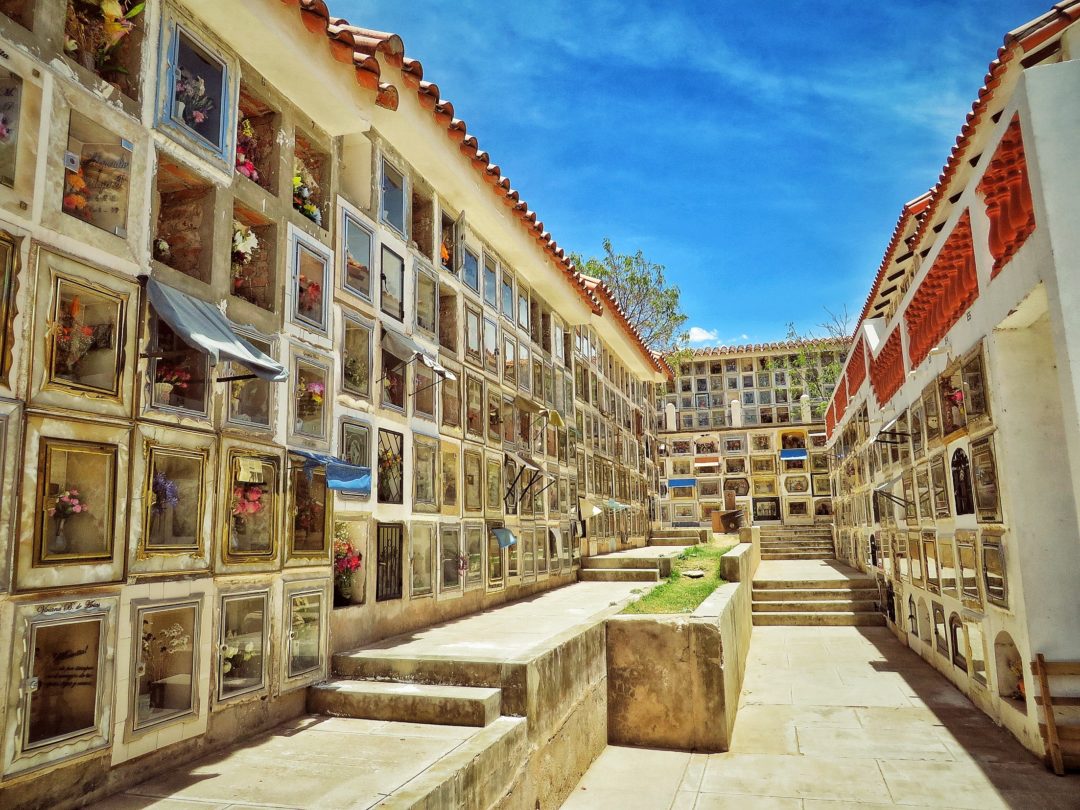
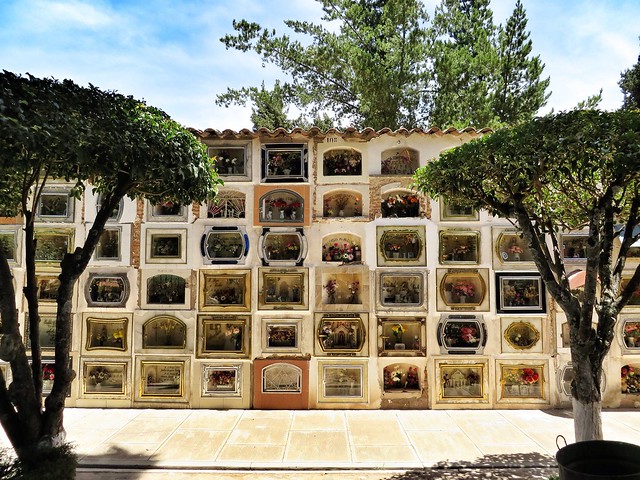
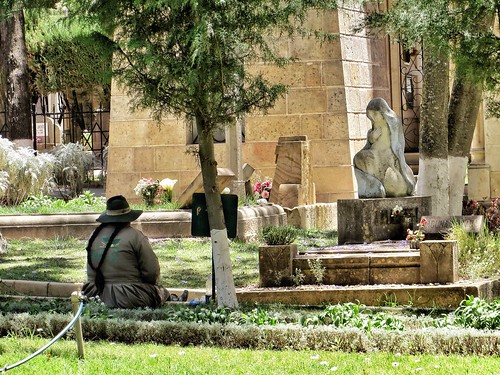


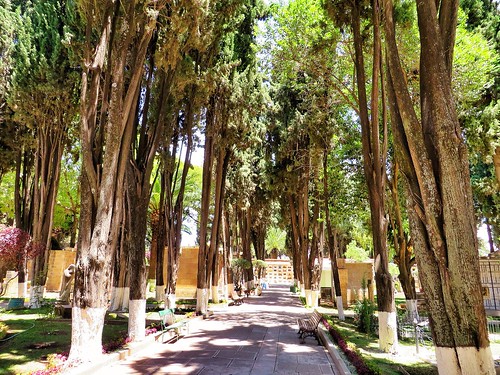
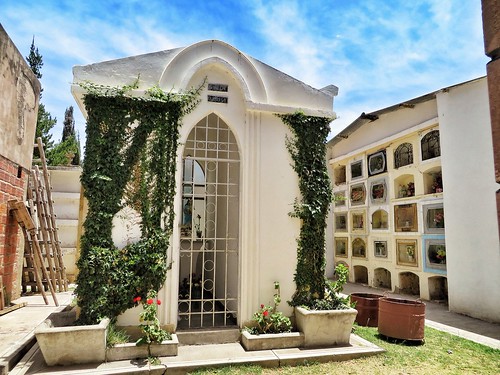
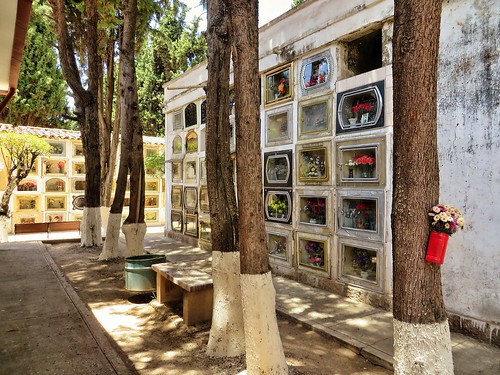
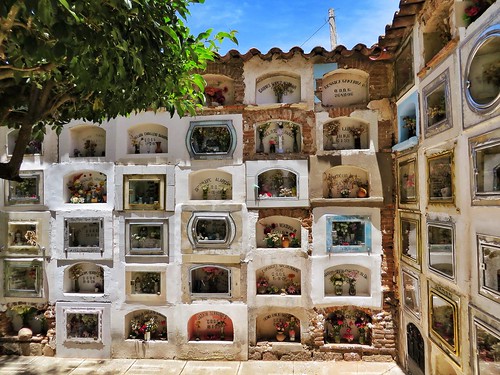

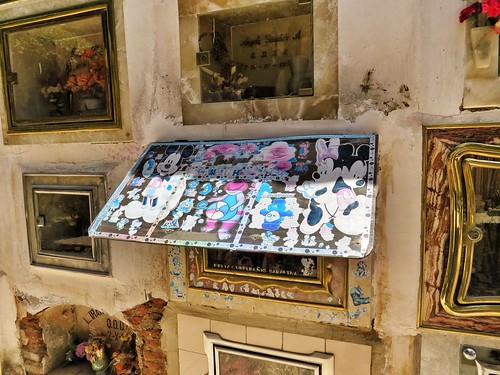
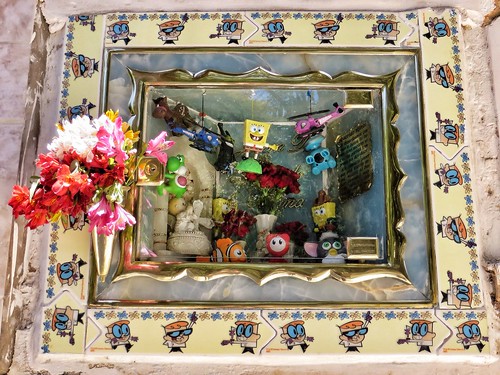
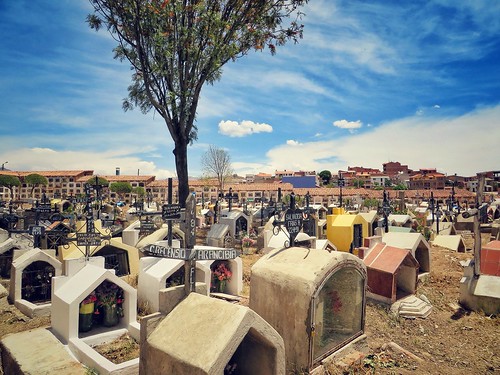
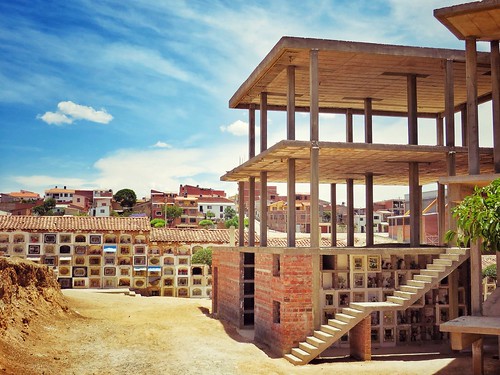

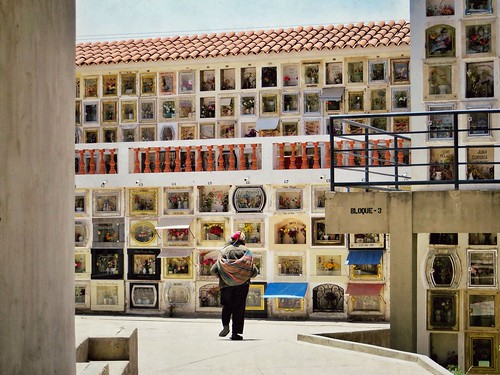
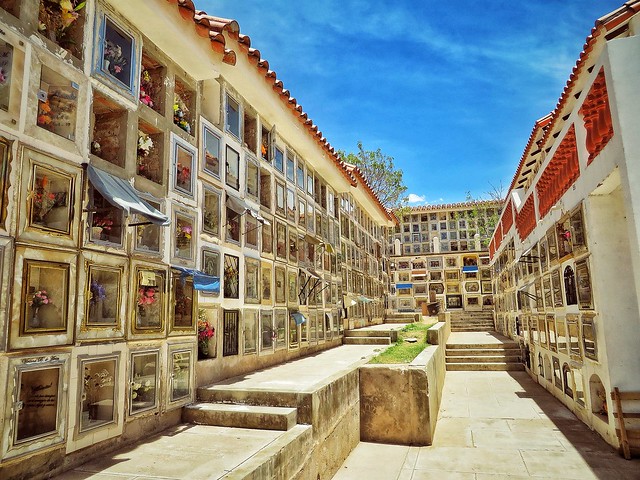
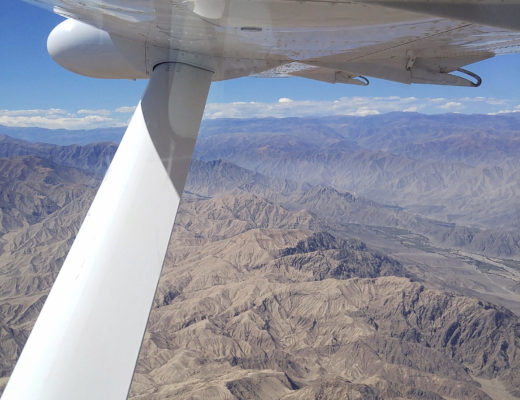

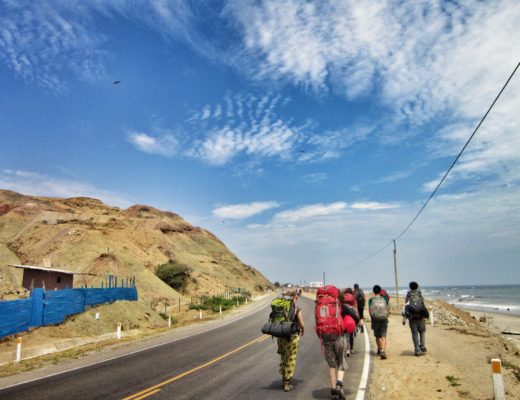
18 Comments
Tanya
November 15, 2013 at 1:55 pmCurious to see it is also this style in Bolivia. So is in Barcelona, this looks like the Sant Andreu cemetery (only the Bolivian one looks more funky), in fact the name Sucre sounds like a Catalan word, this tradition in S America may be resulting from the colonization
Flora
November 19, 2013 at 2:57 pmYep, I can imagine the inspiration for the cemeteries of South America comes from Spanish influence. I’ll have to check out the Barcelona cemetery whenever I make it back to Europe!
Shaz
November 18, 2013 at 5:37 pmBeautiful pictures, I too have an affinity for cemeteries. The shrines add character to the stone, and bring life to such a sad event. I find visiting cemeteries is calming and peaceful, it’s nice to take the time to bring positive thoughts their way.
The cemetery manager at Mountainview Cemetery here in Vancouver says the dead like it when people walk over their graves, so they can feel your presence. I’m not sure how anyone would know this for certain, but I guess it makes sense.
Flora
November 19, 2013 at 3:12 pmI’ve never heard that sentiment before, Shaz, but I can imagine it’s got some truth to it. I actually find it strange how so many people can find cemeteries to be creepy places!
Peter Korchnak @ Where Is Your Toothbrush?
November 26, 2013 at 11:35 amThank you for this lovely photo essay. I can’t say I have an affinity for cemeteries, but I like visiting them wherever I go. Silent, they say more about a people’s culture and history than traditional sights.
The following cemeteries have made the greatest impact on me so far: Zemun, near Belgrade, Serbia; Mirogoj in Zagreb, Croatia; Kovači, below the Yellow Fortress, Sarajevo, Bosnia-Herzegovina; Portland Memorial Mausoleum, Oregon.
Flora
December 19, 2013 at 3:23 pmGreat to hear someone else has the same urge to visit cemeteries around the world! Thanks for sharing your favourites, Peter
kate
October 19, 2014 at 8:48 amI am fascinated with cemeteries too. But now I am curious what happens with the bodies after their time there is up. I find it sad that they don’t get to stay where future generations can visit.
Flora
October 26, 2014 at 6:03 pmI never found out the exact truth about it, Kate, but I think memorials and plaques are still left behind when a body is moved, so at least families have a place to visit their loved ones
Naomi
December 5, 2013 at 11:21 amI am totally amazed and moved. They are so beautiful! Never seen anything like this cemetry before. I am glad that the place looks so beautiful, i mean, that’s how the dead should be honored. I fear visiting cemeteries but this one is an exception. you don’t even get the feeling that you are actually in a cemetery. Nice piece. Will try visit some day.
Flora
December 19, 2013 at 3:24 pmThat was exactly it, Naomi – I barely felt I was even in a cemetery! It’s really a stunning place.
Katie
December 23, 2013 at 8:11 pmFlora,
what is done with the remains after they are exhumed after the 20-year burial period? A common grave? Just disposed of?
I enjoy the sense of history in a cemetery. I learn more about a culture from their graveyard and the grocery store.
Katie
Flora
January 1, 2014 at 4:08 pmI’ve read that the remains are cremated after 20 years, to free up more space in the cemetery. I totally agree about the cultural learning spots – local markets in South America are absolutely the best place to learn about the country!
Jonas
May 26, 2014 at 7:58 pmAmazing post. We have been in a couple of stunning cemeteries so far on our travels, again not sure why, but always seem to be drawn to visit.
Cementerio de la Recoleta in Buenos Aires was stunning and the cemetery in Punta Arenas (Chile) blew us away. It was the first time we had seen the vaults, and agree the stories told with the objects is very interesting and moving.
We were planning to visit here during our time in Sucre, after reading your post, it has moved up the list.. Thank you!
Flora
June 2, 2014 at 4:49 pmOh there’s plenty of reasons to visit cemeteries abroad – the peace and quiet, the architecture, not to mention how fascinatingly different they often are to the ones we’re used to at home. Hope you guys make it to the Sucre cemetery!
Reynaldo
November 1, 2014 at 1:20 amDear Flora,
Thank you very much for posting these beautiful “necro-art.” Now, i am searching for pictures like this for my personal consumption (e.g. posting for my friends,etc.), so therefore asking your permission to make use of your posted-pictures, please.
Flora
November 16, 2014 at 8:26 pmHi Reynaldo, of course you can use these images to show your friends! I’d just ask that if you’re planning to use the images in any public capacity that you credit me and/or my site
amused0bserver
November 2, 2016 at 3:18 pmI’ve been in Sucre as well and I loved this cemeter.
However, when I thought which latin American cemetery I liked most I opted for La Recoleta in Buenos Aires – more sculptures, less like a park.
Flora
November 27, 2016 at 8:16 pmAlas I haven’t made it to BA yet – but I’ve heard fantastic things about La Recoleta! You’ve just bumped it a tad higher on my list